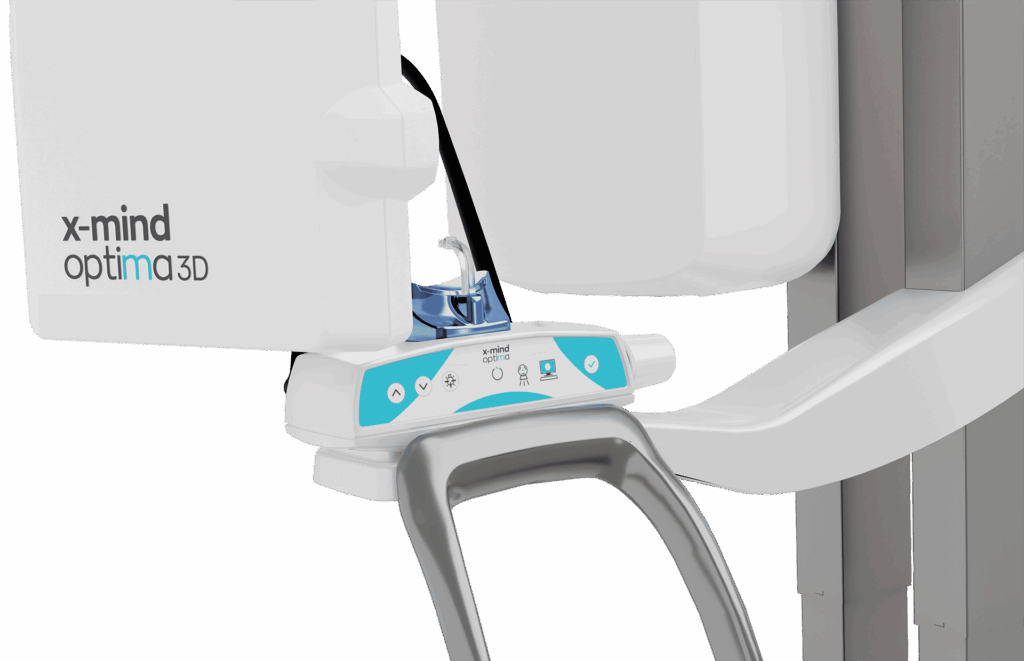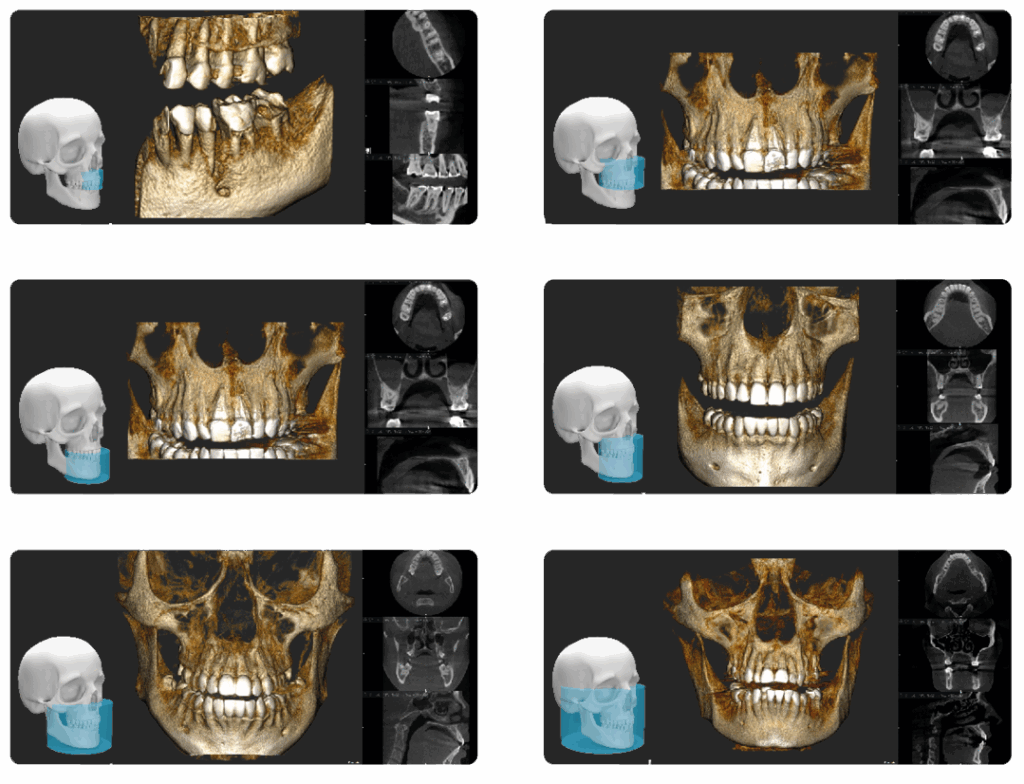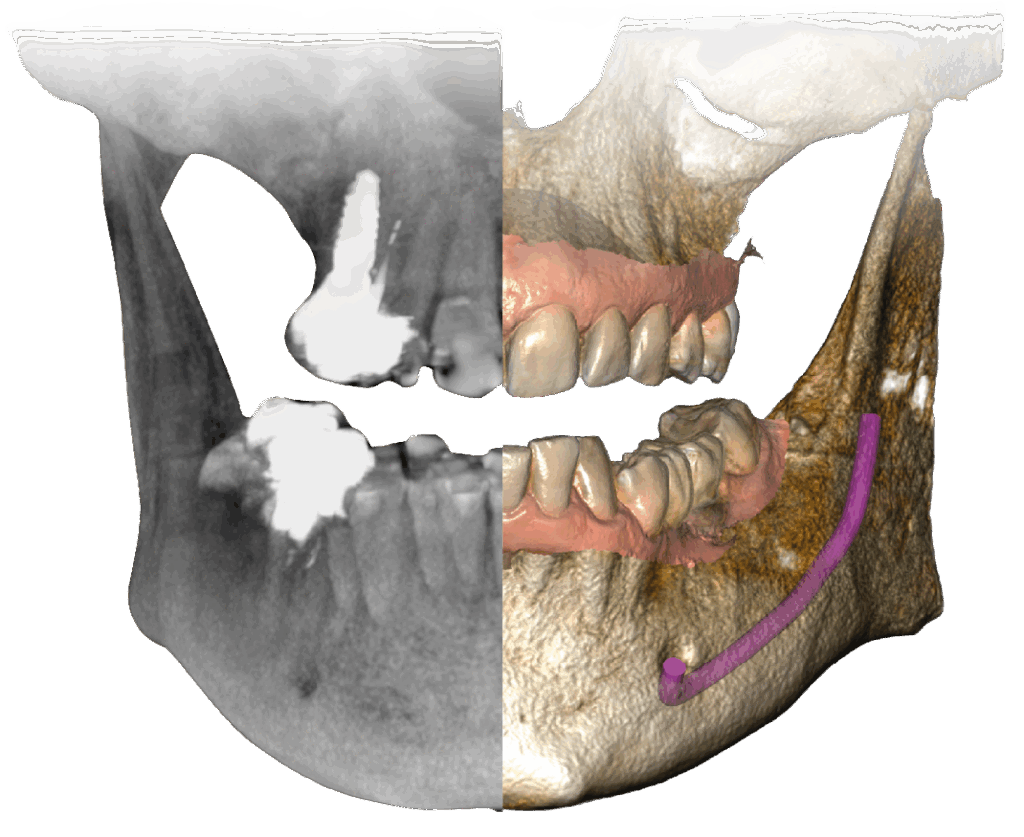Acteon Optima
3D scanning
Workflow
Implantologist and international speaker Laurens Wiggers demonstrates how the X-MIND® optima 3D streamlines daily dentistry with a seamless digital workflow in collaboration with Plandent & ACTEON.
Go to:
- /video tutorials
- /events
- /cases
- /downloads
- /contact

Acteon Optima 3D step-by-step

Compact

CLEAR

SMART AI
What is a CBCT scan in dentistry?
A CBCT scan (Cone Beam Computed Tomography) is a 3D imaging technique used in modern dentistry to provide highly detailed views of the teeth, jaw, and surrounding bone structures. Unlike traditional 2D X-rays, a CBCT scan delivers volumetric images, giving dental professionals the ability to see anatomical structures from every angle. This makes it especially valuable in implantology, orthodontics, endodontics, and maxillofacial surgery.
For patients, the main benefit of a CBCT scan is accuracy and clarity. The technology allows dentists and specialists to diagnose conditions, plan treatments, and monitor progress with greater precision. Whether it’s evaluating bone density for implants or identifying complex root canal issues, a dental CBCT scan ensures that no critical details are missed.
Because of its versatility, a CBCT scan has become an essential tool in modern dental practices worldwide. Systems like the X-MIND® Optima 3D make this technology accessible in a compact and user-friendly format, helping dentists achieve reliable results while maintaining efficiency in daily workflows.
How does the X-MIND® Optima 3D CBCT scanner work?
The X-MIND® Optima 3D CBCT scanner uses a cone-shaped X-ray beam and a flat panel detector to capture detailed 3D images of a patient’s oral and maxillofacial structures. With a single scan, the system gathers comprehensive data, which is then reconstructed into a digital 3D model using advanced imaging software. This process is quick, comfortable for the patient, and highly efficient for the dental team.
One of the key strengths of the Optima 3D is its wide range of Fields of View (FOVs), from small, localized scans to full jaw imaging. This flexibility allows practitioners to adapt each scan to the clinical need, reducing unnecessary radiation exposure while still capturing the information required for accurate diagnostics.
Additionally, the Optima 3D integrates AI-powered features through RealGUIDE™ 5.4, which streamlines treatment planning for implants and restorative dentistry. By combining advanced hardware and software, the system supports predictable outcomes and simplifies even complex clinical cases.
Is the Optima 3D CBCT scan integrated with Exquise?
Yes. One of the unique advantages of the X-MIND® Optima 3D is its seamless integration with Exquise, the widely used dental practice management system. This means scans performed with the Optima 3D can be accessed directly within the patient record, providing dentists with all relevant information in one place.
For dental teams, this integration simplifies the workflow. Assistants can perform scans from a central location, and the images are immediately available in the treatment room through Exquise. This saves time, reduces administrative work, and ensures that diagnostic data is always linked to the correct patient file.
In addition, the Optima 3D makes collaboration with referring dentists straightforward. Scans can be exported and shared complete with a built-in viewer, allowing colleagues to open and review the images without extra software. This user-friendly link between the Optima 3D and Exquise creates a smooth, professional workflow that benefits both dentists and their patients.
Benefits of the Optima 3D vs others
The X-MIND® Optima 3D stands out from other dental CBCT scanners due to its compact, zero-footprint design, which makes it easy to integrate into virtually any practice. For clinics with limited space, this design ensures that high-quality 3D imaging is available without major renovations or workflow disruptions.
Another key advantage is its diagnostic clarity. With detector technology and an extended kV range up to 90 kV, the Optima 3D produces sharp and consistent images, even in challenging cases. This reliability gives dentists the confidence to make accurate diagnoses and develop precise treatment plans for their patients.
Finally, the Optima 3D is designed to be future-proof, thanks to its seamless integration with AI-driven software and digital workflows. By supporting efficient planning, collaboration, and patient communication, the system helps dental professionals focus on delivering care rather than managing complex technology.
How much space do I need for the Optima 3D?
Honestly, that was one of my first concerns as well — space in a dental practice is always limited. The Optima 3D is compact and designed with a “zero-footprint” concept, so you don’t need a large dedicated area to install it.
In my practice, we placed it in a small room right between the back office and the treatment rooms. The actual footprint is about one square meter where the patient stands, plus another square meter for the assistant. Behind a radiation-proof wall, you need roughly another square meter for the computer.
Altogether, the whole setup fits comfortably in a room of around 3 by 2 meters. This allows my assistants to scan patients efficiently without disrupting the workflow of the practice. Everything integrates smoothly into the daily routine.
What's the benefit of AI in the Optima 3D
For me, it’s about speed and confidence. The AI tools in Realguide help with implant planning and restorative workflows. Instead of manually adjusting everything, the software gives me a strong starting point. It doesn’t replace decision-making, but it makes the whole process faster and more predictable.
Does the Optima 3D actually saves time in daily practise?
Absolutely! Since my assistants can handle the scans, the images are already waiting for me or the other dentist in the treatment room via Exquise. I don’t waste time converting files or dealing with compatibility issues. Everything flows straight into the patient record. That kind of efficiency really adds up over the course of a week.
Can the Optima 3D grow with my practice?
That was a big one for me. I didn’t want a system that would feel outdated in two years. With the AI features, software updates, and the broad range of FOVs, the Optima 3D still feels future-proof. Whether you’re mainly doing general dentistry now or planning more complex surgical cases later, it adapts with you.
Disclaimer
This page is based on my own experiences and the choices I made in selecting and working with this application. The content has been created with the support of marketing specialists to align with common search behavior. If you have any doubts or specific questions, please feel free to contact me directly.
Best regards,
Laurens Wiggers
About the X-MIND® optima 3D
As an implantologist, I rely on accurate and efficient imaging every single day. What immediately impressed me about the X-MIND® optima 3D (Optima3D) is how seamlessly it fits into a dental practice. It is compact, space-saving, and still provides highly detailed and consistent images — exactly what’s needed when planning implants, orthodontics, or more complex surgical cases.
A major strength of this system is how it integrates into our daily workflow. My assistants can perform scans from a central location, and I can open the images directly in the treatment room through Exquise, where all patient data is managed. This tight and user-friendly integration between the x-mind optima 3D software and Exquise makes the process efficient and intuitive for the entire team.
Another big advantage is collaboration with referring dentists. The scans can be shared directly, including viewer software, so colleagues can open them easily without needing additional software. This saves time, reduces errors, and makes the patient journey smoother from start to finish.
On top of that, the AI-powered features in the X-MIND® optima 3D, supported by Realguide 5.4, allow me to work faster and with greater predictability. Less focus on technical tasks, more focus on patient care.
For me, the x-mind optima 3D is not just a compact CBCT scanner. It is a future-proof tool that makes diagnostics, planning, and collaboration far more effective.
For more insights into digital workflows and practical experiences, visit our free tutorials on ShareMax Dental